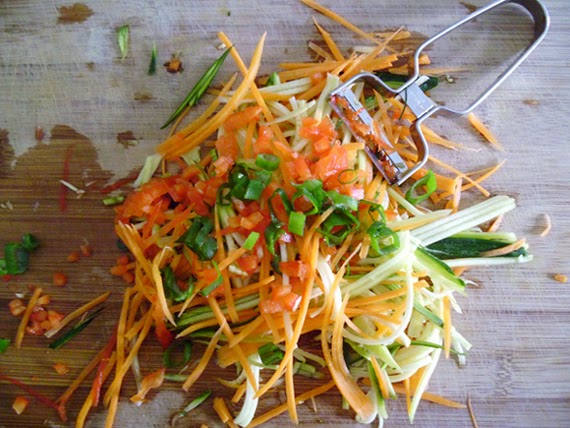Hi again Fodmappers
This week I had a message from a friend who, having been advised by her doctor to try a low-fodmap diet, was concerned at some of the things she had read online. She was particularly worried about some of the information she saw regarding Agave and Aspartame ..
'I was disheartened to see that agave was on the bad food list and aspartame was on the good food list.... this has made me lose hope and confidence in fodmap even before starting.'
I should say that my friend, like many of us, tries to eat as healthily as possible, opting for fresh fruit and vegetables and avoiding unnecessary additives as far as possible - so I could completely understand her concerns regarding Aspartame, and her doubts on seeing this recommended as part of a low-fodmap diet. So this post is dedicated to my friend, in the hope that it addresses her concerns.
But before I talk about Agave and Aspartame I want to say a little about Fructose in relation to a low-fodmap diet.
The Low-Fodmap Diet
As regular readers will know, the low-fodmap diet is a process by which a person initially eliminates
all high-fodmap foods, later reintroducing them one at a
time to identify their personal triggers. (If you're new to the low-fodmap diet, it would be worth you visiting '
What are FODMAPs' before reading on).
Fructose
Fructose is a Monosaccharide (the M in FODMAP) a type of carbohydrate which is poorly absorbed by people with IBS. Though it isn't possible to avoid fructose altogether, it is possible to choose foods which are
low in fructose and other fodmaps, and by doing so gain some control over IBS symptoms.
Agave.
Agave has become popular as a 'healthy' alternative to sugar and has been promoted as 'natural' and low G.I. (1) alternative to sugar. It has long been used as a sweetener in South America where it is also used in the production of Tequila. However Agave syrup should be avoided on a low-fodmap diet due to it's very high fructose content.
'Most agave syrup has a higher fructose content than any commercial
sweetener -- ranging from 55 to 97 percent, depending on the brand,
which is FAR HIGHER than high fructose corn syrup (HFCS), which averages
55 percent.' (2)
Most Fodmappers would realise that high fructose corn syrup is to be avoided, but many people might not realise that fructose is harmful, whether you have IBS or not.
'Your body metabolizes fructose in a much different way than glucose.
Fructose is broken down in your liver just like alcohol and produces
many of the side effects of chronic alcohol use, right down to the "beer
belly".' (2)
Aspartame
Aspartame, an artificial sweetener, is generally chosen by people wanting a low-calorie sweetener, but many fear it is carcinogenic. However, 'the US National Cancer Institute conducted a
study of nearly half a million people, comparing those who consumed
drinks containing aspartame with those who did not. Results of the 2006 study found that aspartame did not increase the risk of leukaemia, lymphoma or brain cancer.' (3)
But the reason that Aspartame might be included on a low-fodmap diet has nothing to do with whether it is carcinogenic or not, and everything to do with the fact that, unlike Agave, it is low-fodmap and therefore unlikely to trigger symptoms of IBS.
When you see Aspartame included on a list of low-fodmap foods, it isn't that it is recommended that you do include it, it's just that it would be preferable to high-fodmap sweeteners such as Agave.
Other low-calorie options such as Xylitol and Sorbitol are high-fodmap and best avoided for that reason.
Honey vs Sugar
While we're talking about sweeteners I think it's worth mentioning honey and sugar. I think it's fair to say that many of us would presume that honey is healthier than sugar. But from a fodmap perspective, honey should be avoided due to it being high-fodmap. Like Agave it is also high in fructose. Sugar, on the other hand is low-fodmap. Interestingly honey and sugar are listed on the current Monash App (4) but neither Aspartame or Agave are.
If you wish to avoid sugar - Stevia, maple syrup and rice syrup are suitable low-fodmap options.
So, what can we conclude from all this? It certainly throws some of our 'knowledge' of what is healthy and what is not into question. I think we have to remember that a low-fodmap diet is a way to address a specific medical condition. Just as we are used to the idea that many other health problems (such as diabetes, raised cholesterol, coeliac disease and obesity) benefit from certain dietary restrictions, so people with IBS can benefit from changes in what they eat. What is 'healthy' for one person, may not be for another.
But as for Aspartame, I have to say I'd rather go without. Even with evidence to the contrary I'd rather not risk my health, which means I'll probably continue to use sugar (in small amounts) despite the known health hazards! However, I won't be using Agave either.
And maybe that's the answer to this concern? If in doubt, leave it out.
'Til next time Fodmappers - Stay Fabulous. x
1.
http://www.nhs.uk/chq/pages/1862.aspx?categoryid=51
2.
http://www.huffingtonpost.com/dr-mercola/agave-this-sweetener-is-f_b_537936.html
3.
http://www.nhs.uk/Livewell/Goodfood/Pages/the-truth-about-aspartame.aspx
4.
http://www.med.monash.edu.au/cecs/gastro/fodmap/iphone-app.html





















